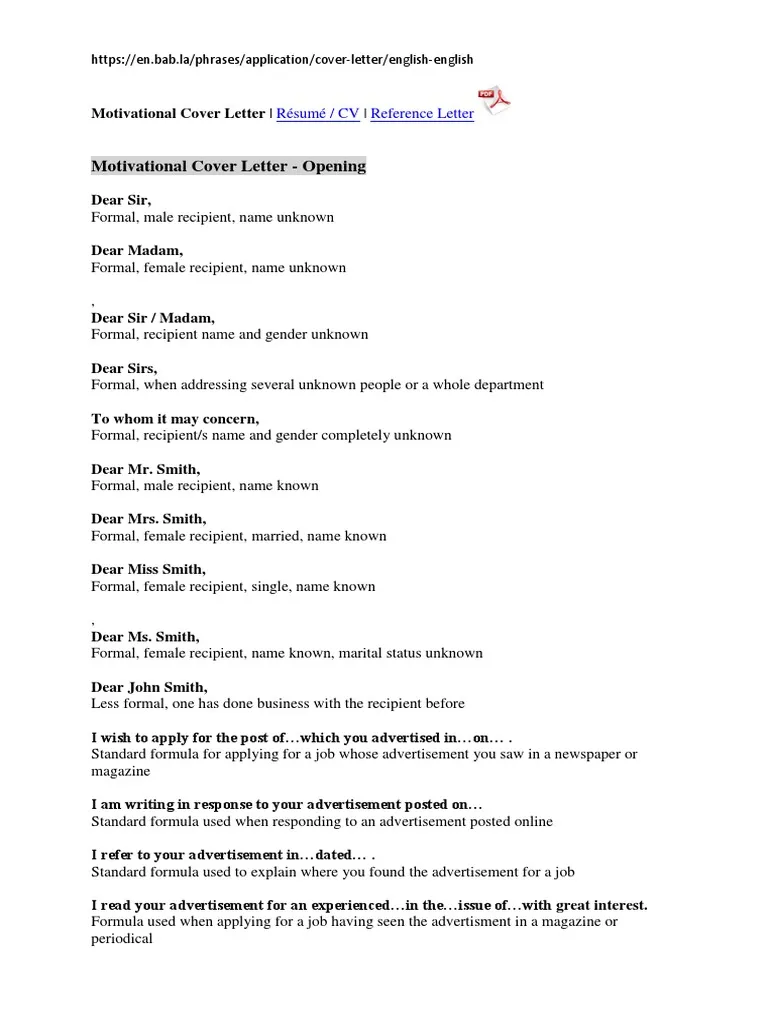Cover Letter Essentials
A well-crafted cover letter is your first impression on a potential employer. It serves as a crucial tool in your job application, acting as a personal introduction that goes beyond the details provided in your resume. Think of it as your opportunity to connect with the hiring manager on a more personal level, showcasing your personality, enthusiasm, and genuine interest in the role and the company. Mastering the art of cover letter writing can significantly increase your chances of landing an interview. A cover letter should be clear, concise, and tailored to each specific job you are applying for. Generic cover letters often get tossed aside; a customized approach demonstrates that you have taken the time to understand the role and the company’s needs, making you stand out from the crowd.
Understanding the Purpose of a Cover Letter
The primary purpose of a cover letter is to introduce yourself to the hiring manager and highlight why you are a good fit for the specific job and the company. It’s your chance to tell a story about your skills, experience, and career goals, showing how they align with the employer’s needs. A cover letter also allows you to expand on the information provided in your resume, providing context and showcasing your personality. It’s an opportunity to demonstrate your communication skills, attention to detail, and your understanding of the company’s values and mission. A cover letter provides a platform to express your enthusiasm and genuine interest in the role, making the hiring manager more inclined to consider your application seriously. Essentially, a well-written cover letter can be the deciding factor in whether or not you are invited for an interview.
Highlighting Your Skills and Experience
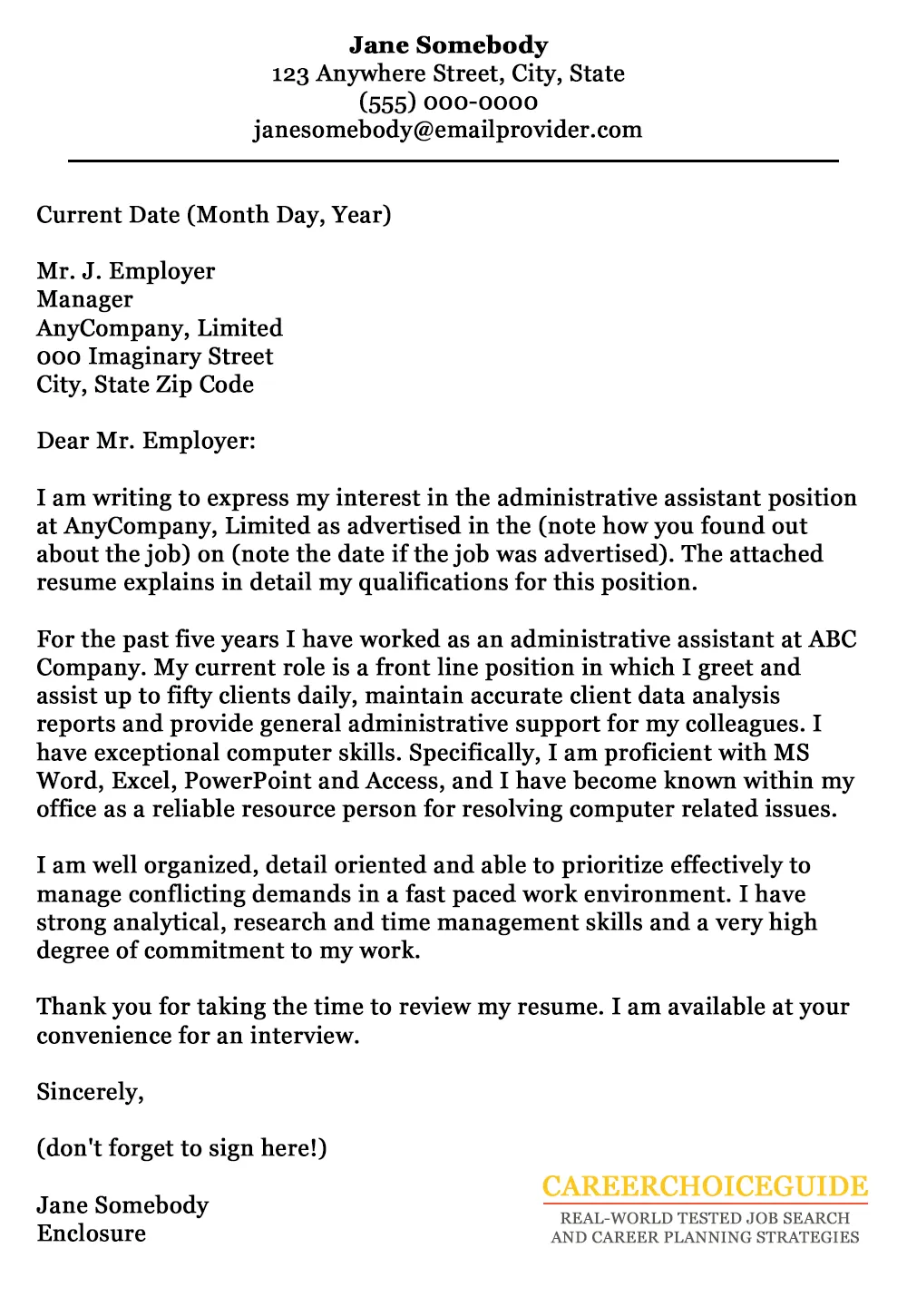
When writing your cover letter, it’s essential to highlight the skills and experiences that make you an ideal candidate for the job. Carefully review the job description and identify the key skills and qualifications the employer is seeking. Then, use specific examples from your past experiences to demonstrate how you have successfully applied these skills. Quantify your achievements whenever possible; for example, instead of saying “Managed social media accounts,” you could say “Increased social media engagement by 30% in six months.” This provides concrete evidence of your abilities and makes your claims more credible. Tailor your examples to match the specific requirements of the job, emphasizing the skills and experiences that are most relevant to the role. This targeted approach shows the employer that you understand their needs and are confident in your ability to meet them.
How to Tailor Your Cover Letter
Tailoring your cover letter to each job is crucial for making a strong impression. Generic cover letters are easily recognizable and often ineffective. Begin by carefully reviewing the job description and identifying the specific requirements, skills, and qualifications the employer is seeking. Then, adjust your cover letter to address these specific needs. Research the company to gain a better understanding of its values, mission, and culture. This will help you personalize your letter and demonstrate your genuine interest in the organization. Use keywords and phrases from the job description throughout your cover letter, which helps your application pass through Applicant Tracking Systems (ATS). Personalize your introduction by mentioning something specific about the company or the role that caught your attention. By tailoring your cover letter, you show the employer that you’ve taken the time to understand the role and are genuinely interested in the opportunity.
Researching the Company and Job
Before you start writing your cover letter, invest time in researching the company and the specific job you are applying for. Visit the company’s website to learn about its mission, values, and recent news. Explore its social media profiles to get a sense of its culture and brand. Research the specific role by reviewing the job description carefully, making notes of the required skills, qualifications, and responsibilities. Understanding the company’s goals and challenges will help you tailor your cover letter to address their specific needs. This research demonstrates your genuine interest in the opportunity and helps you craft a more compelling and targeted application. By showcasing your understanding of the company and the role, you increase your chances of getting noticed by the hiring manager.
Use Relevant Keywords and Phrases
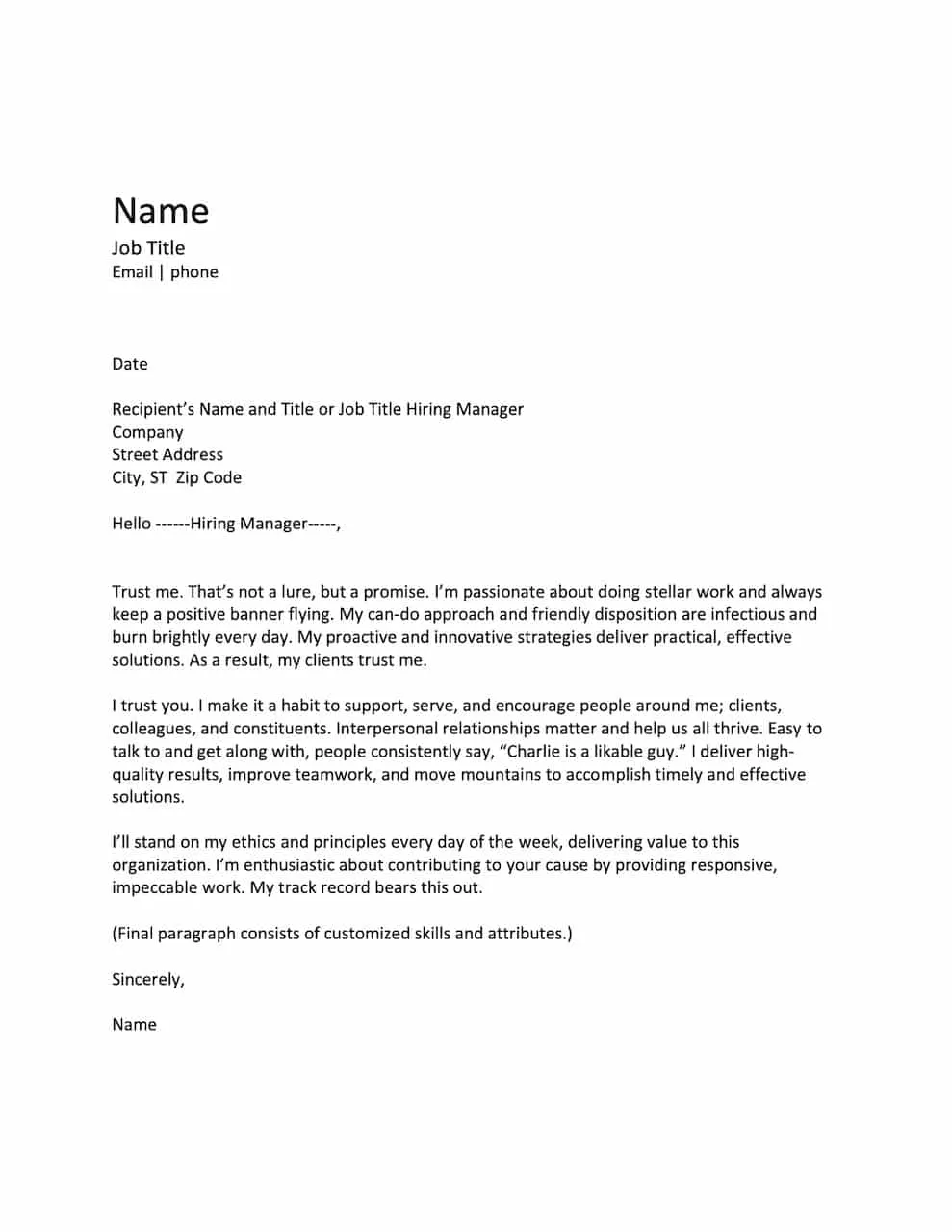
Incorporating relevant keywords and phrases from the job description into your cover letter is a strategic move to improve your chances of success. Applicant Tracking Systems (ATS) are often used to scan applications for these keywords, and including them increases the likelihood that your application will be seen by a human. Carefully review the job description and identify the key skills, qualifications, and requirements. Then, weave these keywords and phrases naturally into your cover letter. Be authentic and avoid keyword stuffing; use the terms in a way that makes sense within the context of your experience and skills. This demonstrates that you meet the requirements and can effectively communicate your qualifications. Using keywords also shows the hiring manager that you understand the role and are capable of performing its duties.
Formatting Your Cover Letter
The format of your cover letter is as important as its content. A well-formatted cover letter is easy to read and reflects your professionalism. Use a clear, professional font like Arial, Calibri, or Times New Roman with a font size between 10 and 12 points. Maintain consistent formatting throughout the document, including line spacing, margins, and headings. Use a standard business letter format, with your contact information at the top, followed by the date and the hiring manager’s name and address. Divide your cover letter into clear sections, including an introduction, body paragraphs, and a conclusion. Keep your paragraphs concise and to the point, using bullet points or numbered lists where appropriate to break up text and highlight key information. Proofread your cover letter carefully to ensure there are no typos or grammatical errors, as these can make a negative impression on the reader.
Key Sections of a Cover Letter
A standard cover letter typically includes several key sections, each serving a specific purpose. These sections work together to create a compelling introduction of yourself. They provide an overview of your relevant skills and experience, and express your interest in the position. The main sections include a header containing your contact information, a salutation to the hiring manager, an introduction that grabs the reader’s attention, body paragraphs that showcase your qualifications, and a closing that reiterates your interest and includes a call to action. Each section plays a vital role in conveying your qualifications and making a positive impression.
The Header Contact Information
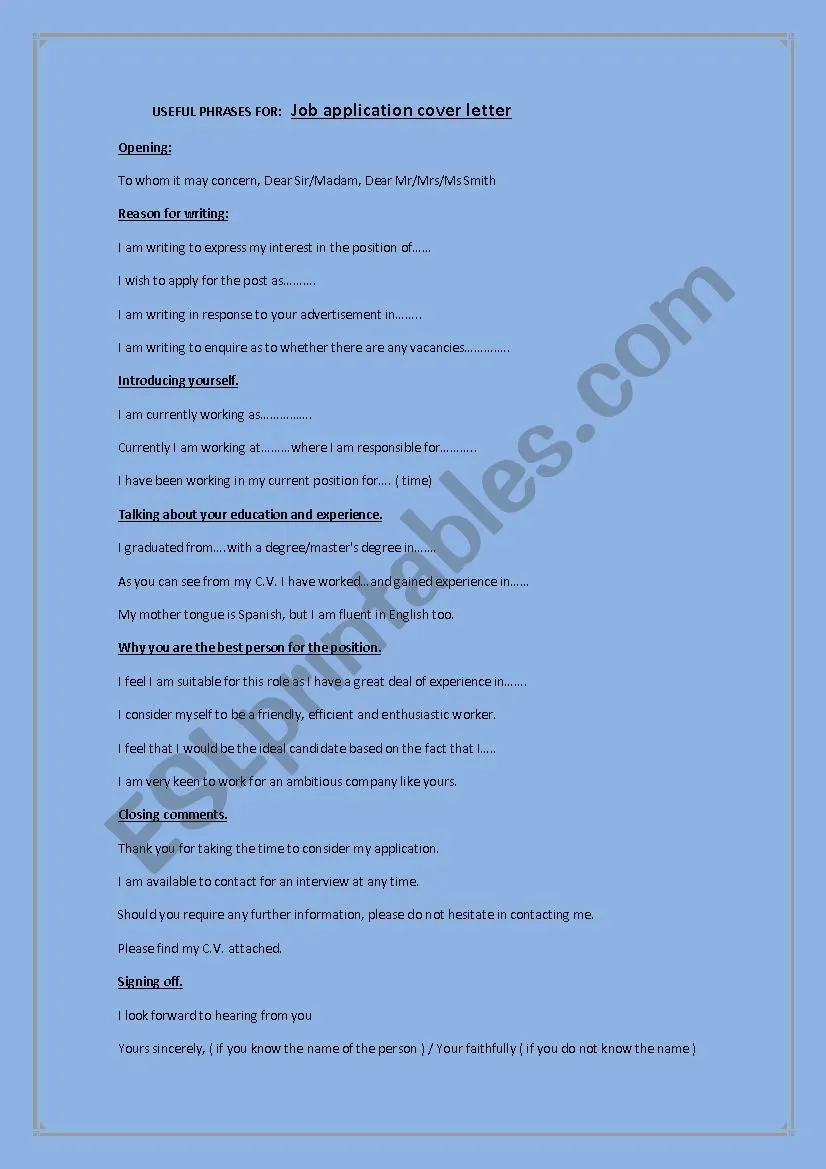
Your cover letter should begin with a header that includes your contact information. This information should be placed at the top of the page, typically aligned to the left or right. Include your full name, phone number, email address, and LinkedIn profile URL. Ensure that the contact information is accurate and up-to-date, as this is how the hiring manager will reach you if they want to schedule an interview. Make sure the contact details are clear, easy to read, and professional. Avoid using informal email addresses; opt for an email address that includes your name or professional title. This section is the foundation of your cover letter, providing essential information for the hiring manager to contact you.
The Salutation Getting Their Attention
The salutation is your opening greeting. Whenever possible, address the hiring manager by name. This shows that you have taken the time to research the company and personalize your application. If you can’t find the hiring manager’s name, use a professional greeting like “Dear Hiring Manager” or “Dear [Department Name] Team.” Avoid generic salutations such as “To Whom It May Concern,” as they can make your letter seem less personalized. Ensure the salutation is followed by a colon and not a comma, which is a standard practice for business letters. The salutation sets the tone for the rest of your cover letter and indicates your level of professionalism and attention to detail.
The Body Showcasing Your Value
The body of your cover letter is where you showcase your value and demonstrate why you are the ideal candidate for the job. This section should be divided into well-structured paragraphs that each address a specific aspect of your qualifications. The first paragraph should grab the reader’s attention and state the position you’re applying for. In the subsequent paragraphs, highlight your relevant skills, experiences, and achievements. Provide specific examples to support your claims, quantifying your accomplishments whenever possible. Tailor your content to match the job description, emphasizing the skills and experiences that align with the employer’s needs. Explain how your skills and experiences have benefited your previous employers. The body of your cover letter should tell a story about your career and how it aligns with the company’s needs.
Creating a Strong Opening
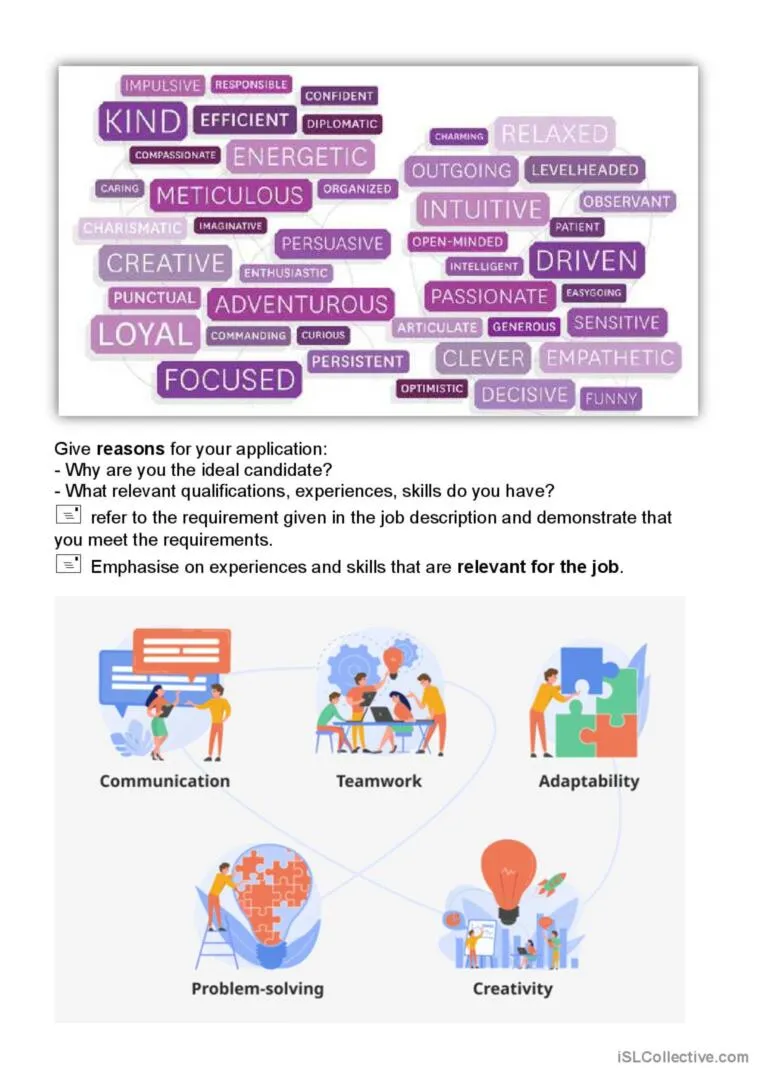
Your opening paragraph is your chance to make a strong first impression, so make it count. Start by clearly stating the position you’re applying for and where you saw the job posting. Consider mentioning something specific about the company or the role that sparked your interest. You can also include a brief statement about your most relevant skills or experience. Avoid generic opening lines like “I am writing to express my interest.” Instead, aim for an opening that is engaging and personal, demonstrating your enthusiasm for the role. By creating a strong opening, you’ll capture the hiring manager’s attention and encourage them to continue reading your cover letter.
Highlighting Relevant Skills
In the body of your cover letter, highlight the skills that make you a strong candidate for the job. Carefully review the job description and identify the key skills the employer is seeking. Then, provide specific examples from your past experiences to demonstrate how you have successfully applied these skills. Tailor your examples to the specific requirements of the job, emphasizing the skills and experiences that are most relevant. Use action verbs to describe your accomplishments, such as “managed,” “developed,” or “implemented.” Focus on the most important skills, such as the ability to communicate effectively, solve problems, and work collaboratively. By highlighting the skills that align with the job requirements, you can show the hiring manager that you have the knowledge and abilities needed to succeed in the role.
Quantifying Your Achievements
Whenever possible, quantify your achievements in your cover letter. Instead of simply stating that you “increased sales,” provide specific metrics, such as “Increased sales by 15% in the first quarter.” Quantifying your accomplishments adds credibility to your claims and demonstrates your impact. Use numbers, percentages, and other specific data to illustrate the results you have achieved in previous roles. This helps the hiring manager understand the value you can bring to their company. Examples of quantification include the number of projects completed, the amount of money saved or earned, or the percentage improvement in efficiency. By quantifying your achievements, you make your cover letter more persuasive and show the hiring manager that you are a results-oriented professional.
Addressing the Employer’s Needs

Your cover letter should address the employer’s needs and show how you can help them achieve their goals. After researching the company and the role, tailor your letter to show your understanding of their challenges and objectives. Explain how your skills and experience can help them solve problems, improve efficiency, or achieve their desired outcomes. Focus on what you can offer the company, not just what you want from the job. Provide specific examples of how you have helped previous employers, showing how your abilities can benefit the hiring company. Aligning your cover letter with the employer’s needs shows them that you understand the role and are prepared to contribute to their success.
The Closing Leaving a Lasting Impression
The closing of your cover letter is your final opportunity to leave a lasting impression. Restate your interest in the position and express your enthusiasm for the opportunity. Thank the hiring manager for their time and consideration. Keep the closing brief and professional, and include a call to action, such as inviting the hiring manager to contact you for an interview. Ensure your closing is consistent with the overall tone of your cover letter. A strong closing reaffirms your interest and makes it more likely that you will be considered for an interview.
Creating a Powerful Call to Action
A call to action in your cover letter encourages the hiring manager to take the next step. Include a clear and direct call to action in your closing paragraph. Invite the hiring manager to contact you for an interview or to discuss your qualifications further. Make it easy for them to follow through by providing your phone number and email address. Ensure that your call to action is specific and relevant to the job you’re applying for. The goal is to prompt the hiring manager to take the next step in the hiring process and invite you for an interview. A well-crafted call to action can significantly increase your chances of advancing your application.
Proofreading and Editing Your Cover Letter
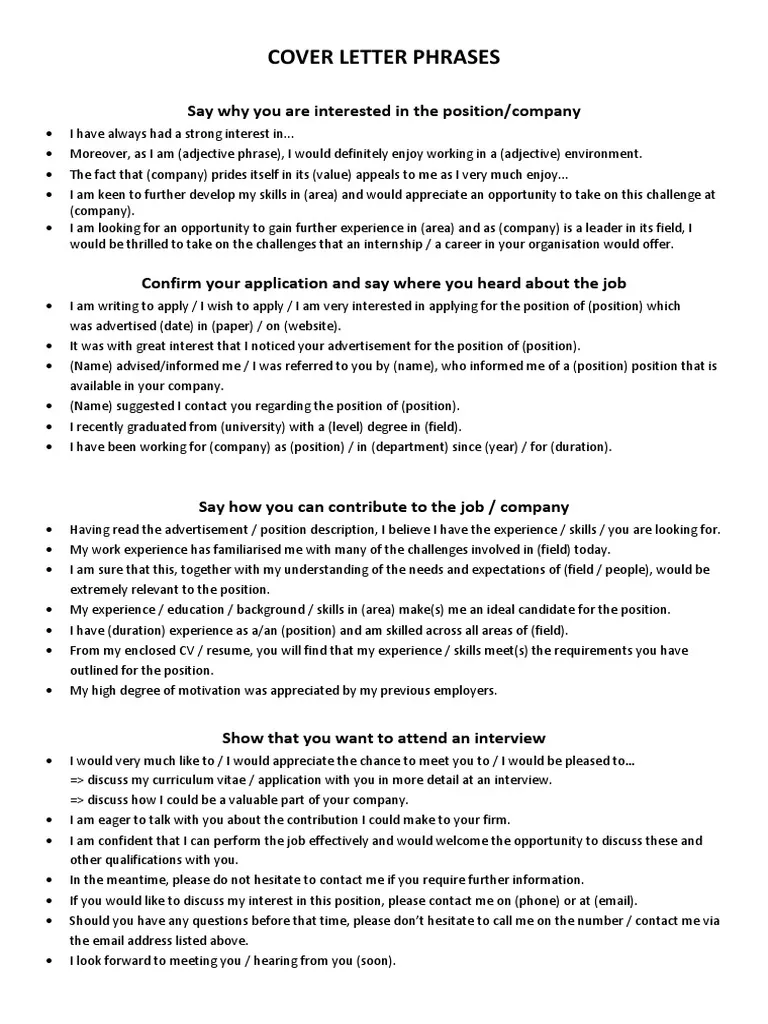
Proofreading and editing your cover letter is essential to ensure it’s free of errors and presents you in the best possible light. Errors in grammar, spelling, or punctuation can create a negative impression and undermine your credibility. After you have finished writing your cover letter, take time to review it carefully. Read your cover letter aloud to catch any awkward phrasing or errors. Use a spell checker and grammar checker, but don’t rely on them entirely; they may not catch every mistake. Ask a friend, colleague, or career counselor to review your cover letter for feedback. Ensure that your cover letter is concise, well-organized, and free of errors. By proofreading and editing your cover letter, you show attention to detail and your commitment to presenting a polished and professional image.
Avoiding Common Cover Letter Mistakes
Avoiding common cover letter mistakes can significantly improve your chances of getting hired. A cover letter riddled with errors and pitfalls can lead to instant rejection. Common mistakes can include generic cover letters, grammatical errors, being too vague, focusing too much on yourself, and not following instructions. By avoiding these mistakes, you can create a more effective cover letter that highlights your strengths and aligns with the employer’s needs.
Mistake 1 Generic Cover Letters
One of the most common mistakes is sending a generic cover letter that is not tailored to the specific job or company. Generic cover letters often sound impersonal and fail to capture the hiring manager’s attention. They lack the specific details that demonstrate your understanding of the role and your enthusiasm for the opportunity. Tailor your cover letter to each job you apply for. Research the company and the role, and use the job description as a guide to highlight your relevant skills and experiences. A tailored cover letter shows the employer that you have taken the time to understand their needs and are genuinely interested in the opportunity.
Mistake 2 Typos and Grammatical Errors
Typos and grammatical errors can undermine your credibility and make a negative impression on the hiring manager. These errors indicate a lack of attention to detail and can make you appear unprofessional. Proofread your cover letter carefully to catch any mistakes. Use a spell checker and grammar checker, but don’t rely on them entirely; they may not catch every error. Read your cover letter aloud to identify awkward phrasing or errors. Consider having a friend or colleague review your letter. Proofreading ensures that your cover letter is polished and error-free.
Mistake 3 Being Too Vague
Being too vague in your cover letter prevents the hiring manager from understanding your qualifications and achievements. Avoid making general statements without providing specific examples or evidence to support your claims. Instead of saying “I am a good communicator,” provide examples of how you have effectively communicated in previous roles. Quantify your achievements whenever possible. Be clear, concise, and specific in your writing. The goal is to demonstrate your skills and experience in a way that is both clear and convincing, showing your qualifications and value.
Mistake 4 Focusing on Yourself Too Much
Focusing too much on yourself, rather than on the employer’s needs, can make your cover letter less effective. While it is important to highlight your skills and experience, remember to align your qualifications with the job requirements. Explain how your skills and experience can benefit the employer. Focus on what you can bring to the company and how you can help them achieve their goals. Research the company and the role, and tailor your cover letter to address their specific needs. Demonstrate that you understand their challenges and objectives, and show how your skills and experience can help them succeed. By focusing on the employer’s needs, you can demonstrate that you are a valuable candidate who is ready to contribute to their success.
Mistake 5 Not Following Instructions
Failing to follow instructions can signal that you may not be attentive to detail. Review the job description and any application instructions carefully. If the job posting asks for specific information or a particular format, make sure you provide it. Show that you can follow directions. By following the instructions, you demonstrate your attention to detail and your ability to adhere to guidelines. This is an important quality that employers look for, and it can help you stand out from other applicants.
Utilizing Cover Letter Examples
Cover letter examples can be a valuable resource when writing your own cover letter. They can provide inspiration, guidance, and insights into the best practices. Many websites and career resources offer cover letter templates and examples for various job types and industries. Use these examples as a starting point to develop your own cover letter. Customize the examples to reflect your skills, experience, and the specific requirements of the job you are applying for. Don’t copy the examples word for word; instead, adapt them to your own situation. By using cover letter examples, you can get a better understanding of the format, content, and tone that are most effective. Cover letter examples can help you craft a cover letter that highlights your strengths and is tailored to the job.
Adapting Examples to Your Situation
Adapting cover letter examples to your specific situation is essential to create a cover letter that is both effective and authentic. Don’t simply copy and paste an example; instead, customize it to reflect your unique skills, experience, and the specific requirements of the job you are applying for. Tailor the content, language, and tone to match your own personality and style. Replace generic statements with specific examples from your previous work experience. Highlight the skills and experiences that are most relevant to the job. Before using any example, ensure the language and tone are appropriate for the specific role you are applying for. Adapting examples allows you to benefit from the best practices while showcasing your individuality and making your cover letter more persuasive.
Cover Letter Template Options
Cover letter templates provide a pre-designed structure to guide you through the writing process, which can save you time and effort. Various templates are available online, offering different styles and formats. Consider templates that suit your professional field and the specific job requirements. Choose a template that is easy to read and visually appealing, reflecting your professionalism. Make sure to customize the template with your personal information, skills, and experiences. Fill in all the relevant sections, ensuring that the content is tailored to the job. Cover letter templates can be particularly useful if you are unsure where to begin or want to ensure that your cover letter includes all the essential sections. By utilizing a cover letter template, you can create a well-structured and effective document.
Final Tips for Cover Letter Success
To maximize your chances of cover letter success, incorporate these final tips into your writing process. Proofread your cover letter carefully to eliminate any errors. Customize your cover letter to each job application, showcasing your knowledge. Be enthusiastic and passionate in your writing. Use a professional tone and language. Proofread again. By implementing these final tips, you can create a cover letter that will impress the hiring manager and increase your chances of getting the interview.
